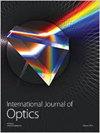Automatic Classification of Red Blood Cell Morphology Based on Quantitative Phase Imaging
IF 1.8
4区 物理与天体物理
Q3 OPTICS
引用次数: 5
Abstract
Classification of the morphology of red blood cells (RBCs) plays an extremely important role in evaluating the quality of long-term stored blood, as RBC storage lesions such as transformation of discocytes to echinocytes and then to spherocytes may cause adverse clinical effects. Most RBC segmentation and classification methods, limited by interference of staining procedures and poor details, are based on traditional bright field microscopy. In the present study, quantitative phase imaging (QPI) technology was combined with deep learning for automatic classification of RBC morphology. QPI can be used to observe unstained RBCs with high spatial resolution and phase information. In deep learning based on phase information, boundary curvature is used to reduce inadequate learning for preliminary screening of the three shapes of unstained RBCs. The model accuracy was 97.3% for the stacked sparse autoencoder plus Softmax classifier. Compared with the traditional convolutional neural network, the developed method showed a lower misclassification rate and less processing time, especially for RBCs with more discocytes. This method has potential applications in automatically evaluating the quality of long-term stored blood and real-time diagnosis of RBC-related diseases.基于定量相位成像的红细胞形态自动分类
红细胞形态的分类对评价长期储存血液的质量起着极其重要的作用,因为红细胞储存病变如盘状细胞转化为棘球细胞再转化为球细胞可能会引起不良的临床反应。大多数红细胞分割和分类方法是基于传统的明场显微镜,受染色程序的干扰和细节不佳的限制。本研究将定量相位成像(QPI)技术与深度学习技术相结合,对红细胞形态进行自动分类。QPI可用于观察未染色红细胞,具有较高的空间分辨率和相位信息。在基于相位信息的深度学习中,边界曲率用于减少初步筛选未染色红细胞的三种形状的学习不足。采用堆叠稀疏自编码器加Softmax分类器的模型准确率为97.3%。与传统的卷积神经网络相比,该方法具有较低的误分类率和较短的处理时间,特别是对于含有较多椎间盘细胞的红细胞。该方法在长期储存血液质量的自动评价和红细胞相关疾病的实时诊断方面具有潜在的应用前景。
本文章由计算机程序翻译,如有差异,请以英文原文为准。
求助全文
约1分钟内获得全文
求助全文
来源期刊

International Journal of Optics
Physics and Astronomy-Atomic and Molecular Physics, and Optics
CiteScore
3.40
自引率
5.90%
发文量
28
审稿时长
13 weeks
期刊介绍:
International Journal of Optics publishes papers on the nature of light, its properties and behaviours, and its interaction with matter. The journal considers both fundamental and highly applied studies, especially those that promise technological solutions for the next generation of systems and devices. As well as original research, International Journal of Optics also publishes focused review articles that examine the state of the art, identify emerging trends, and suggest future directions for developing fields.
 求助内容:
求助内容: 应助结果提醒方式:
应助结果提醒方式:


